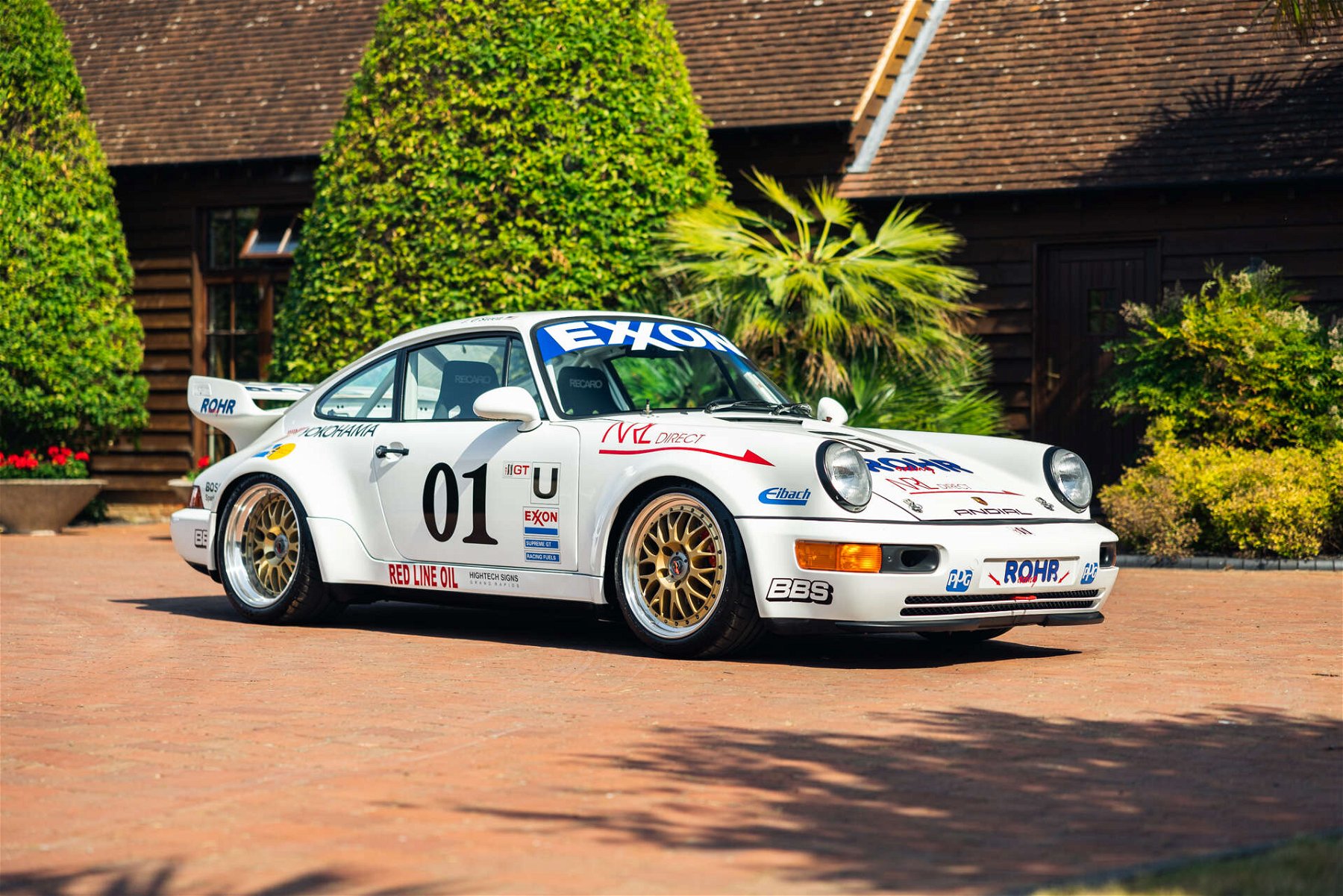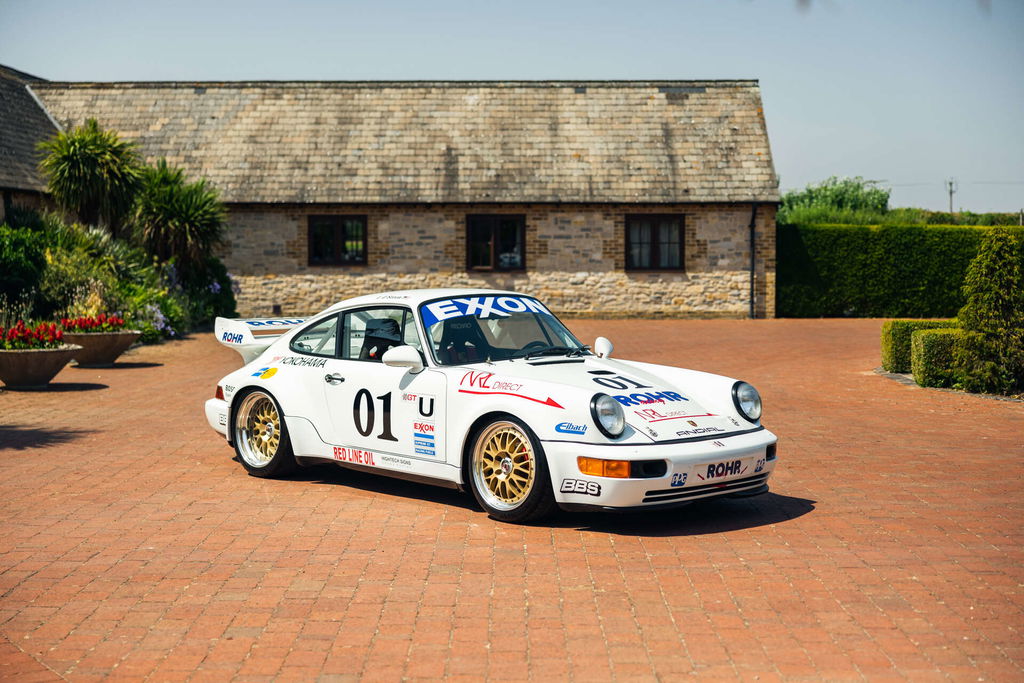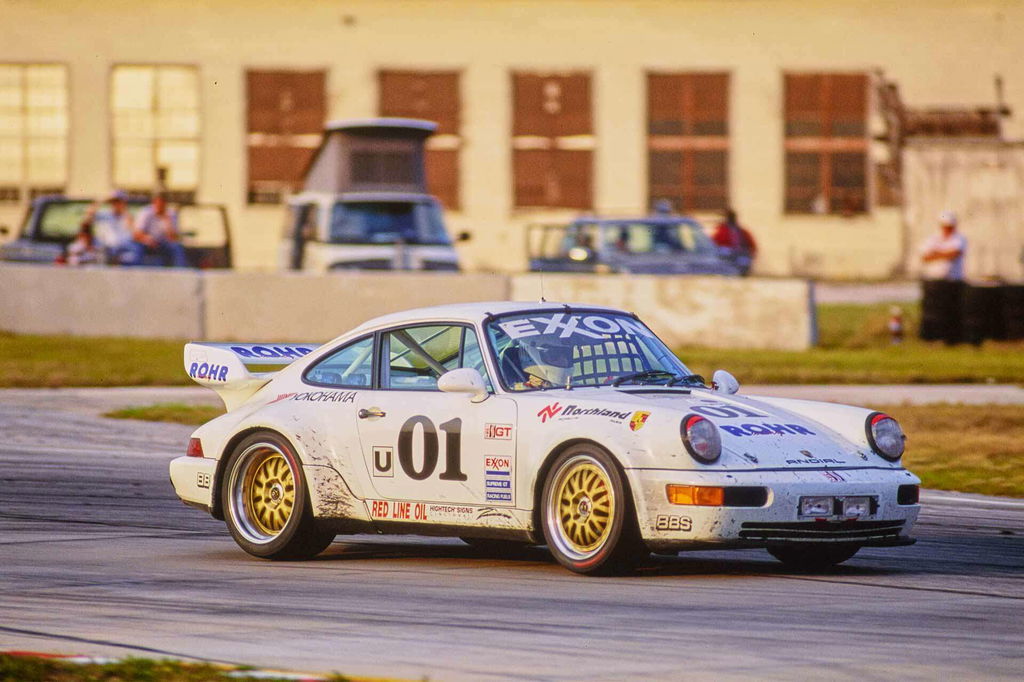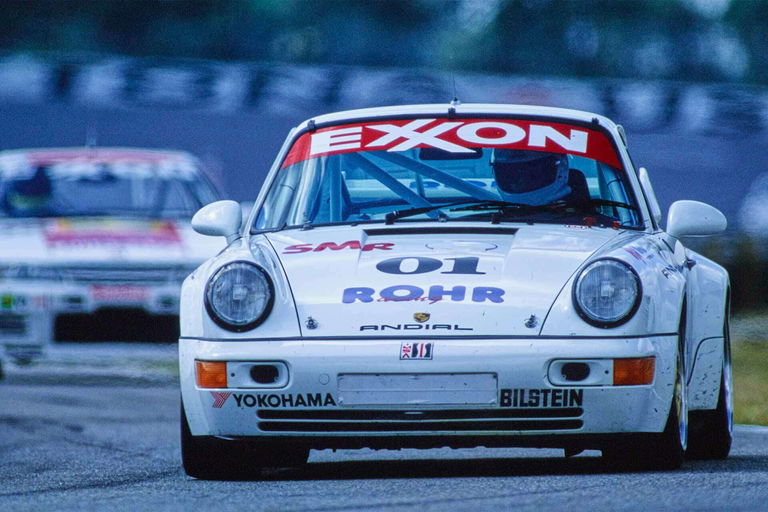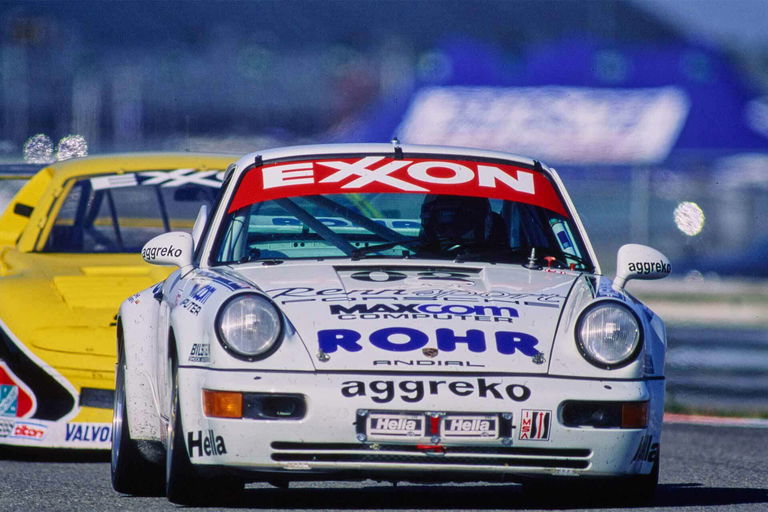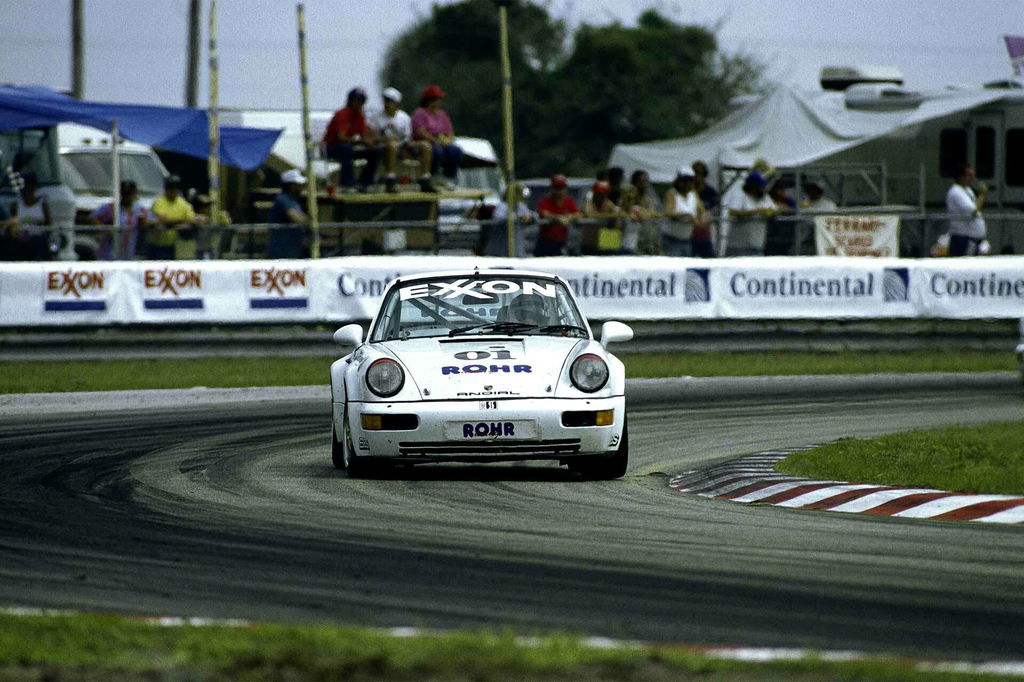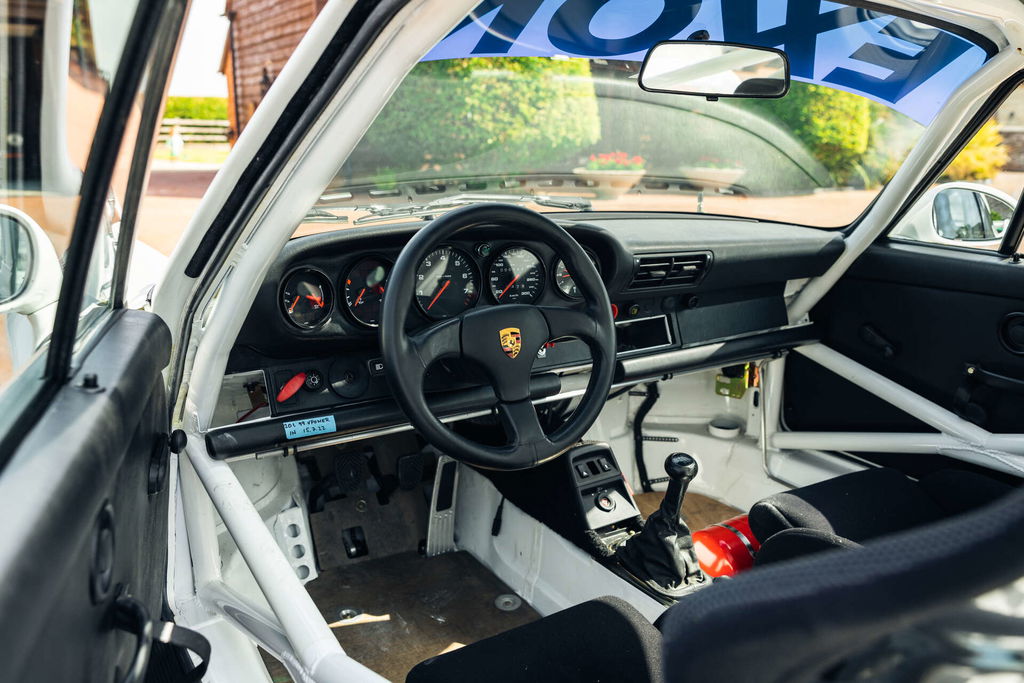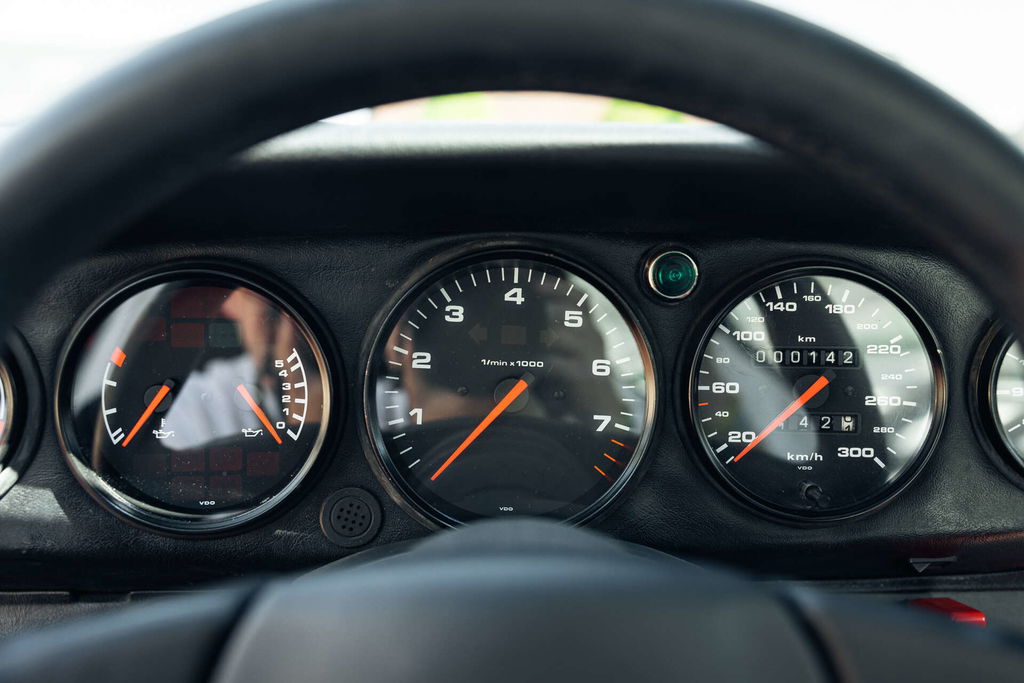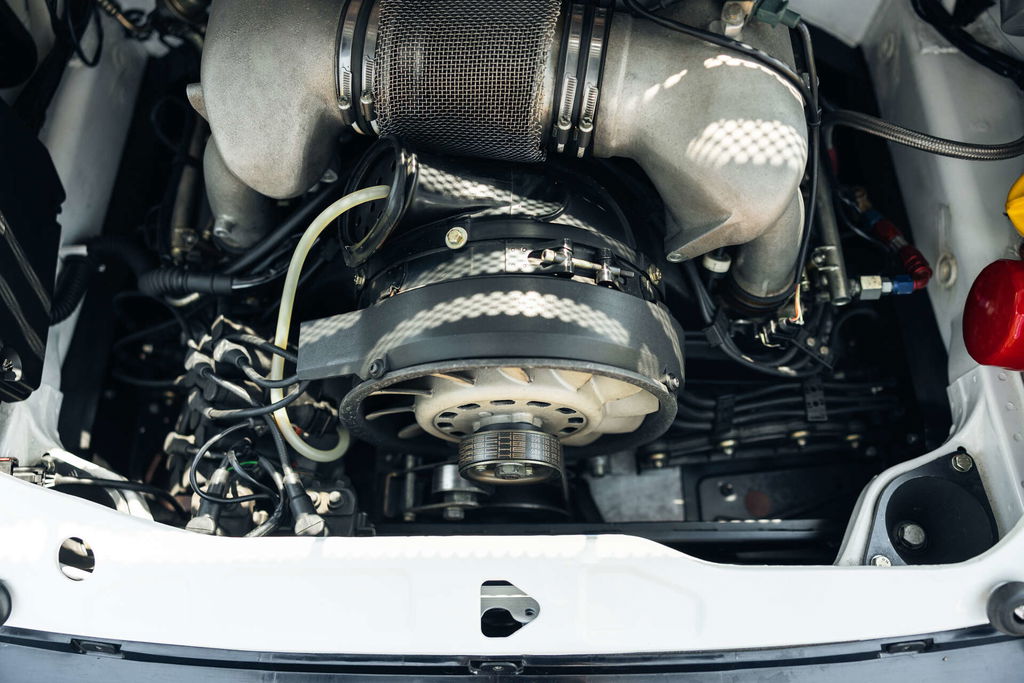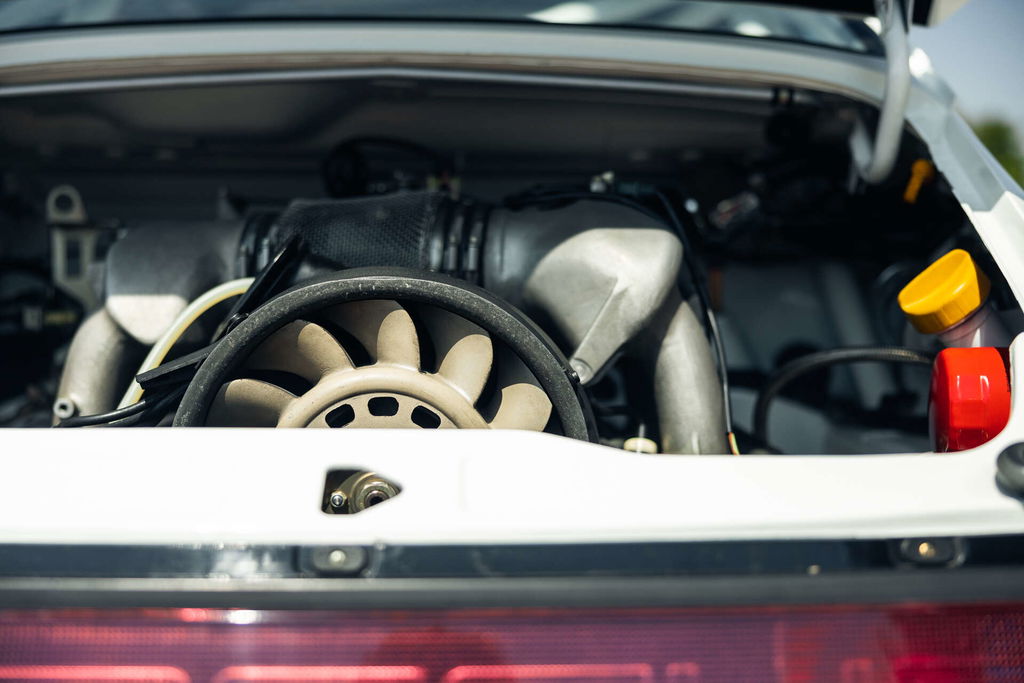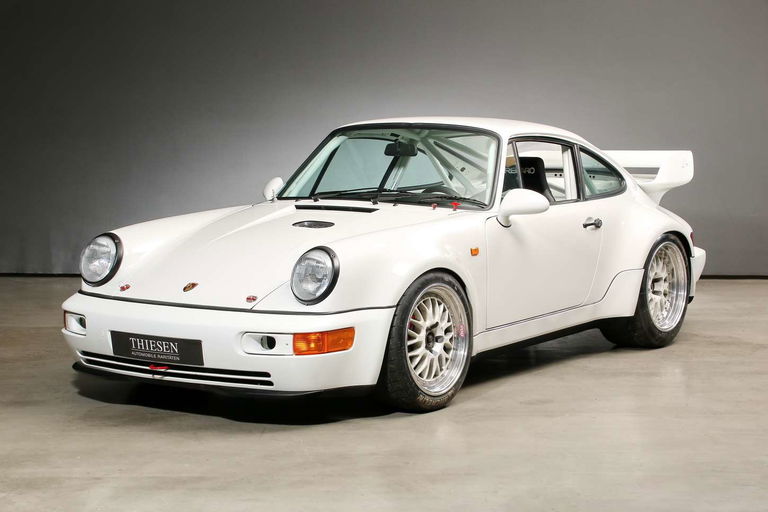Chassis no. WP0ZZZ96ZPS496079 – Engine no. 62P85578 – Registration: UK V5
Soul stirring. They’re the only reasonable words to describe the noise which emanates from the somewhat crudely fabricated exhaust tips of the 1993 Porsche 964 Carrera RSR 3.8. It’s less Teutonic flat-six method and more American V8 madness – a rabid roar which tears the silence to shreds and shakes you to your very core.
As you dare to dig deeper into the RSR’s locker and climb higher towards its heady 7,000rpm-plus redline, you’re rewarded not only with an engulfing wave of cacophonic sound but also an astonishingly urgent turn of speed. Oh, this is a pure-bred racing car all right.
But in spite of the uncompromising performance, there’s a reassuring familiarity to the driving environment in which you sit. Beyond the characteristic five circular dials, the very same you’d find in any 964 model, there’s that textbook 911 visibility, interrupted only slightly by the headlights standing proud at the front corners.
You don’t hold your breath at narrow passing points in the road – because the RSR is not a wide car. In the same vein, you don’t wince every time you approach a sleeping policeman. And while the ride is certainly stiff, it’s not bone-jarring. This is a Porsche 911 all right.
In the historical Porsche pecking order, the 964-generation 911 Carrera RSR 3.8 ranks very highly indeed. And rightly so. When GT racing rose from the ashes of Group C in the early 1990s, Porsche had a brainwave. With so many national and international GT racing series emerging around the world, it sought to build a racing car for privateer teams and drivers which would satisfy the regulations for all of said series. A sort of GT racing skeleton key, if you will.
Porsche’s press kit for the RSR said it best. “The Carrera RSR 3.8 can be taken to the start of the 24-hour races at the Nürburgring, Spa or Le Mans. It would suit the popular Veedol endurance cup in accordance with Procar as well as ADAC GT regulations. This car could also start in Italian, Japanese or the American IMSA GT championships.”
Unlike in the 1970s and ’80s, GT racing’s minimum-production homologation requirement had been dropped to just 100 units in order to attract more manufacturers to the discipline. As the FIA permitted Porsche to reach the magic number with a combination of both road-legal and race-ready cars, so the 964 Carrera RS 3.8 and RSR 3.8 were born.
In the end, 51 race-ready RSRs were constructed and hand-finished at Porsche’s Weissach motorsport skunkworks. And the recipe was an intoxicating one. After the ‘regular’ 964 bodyshells had been completed on the production line in Zuffenhausen, they were withdrawn, fully seam-welded and sent to Wilfried Matter to have a full (colour-matched) roll-cage welded in – a process which took three whole days.
The wizards at Porsche were then permitted to get to work on assembling the RSRs. And they left no stone unturned in their quest to hand-build the lightest, fastest and best-handling GT racing car they could. Lurking beneath the voluptuous Turbo-style hips was a naturally aspirated 3.8-litre air-cooled flat-six. The already-potent engine then received lightweight pistons, intake manifolds with six individual butterflies, dry-sump lubrication and Bosch electronic fuel injection.
The interior was stripped of any road-biased creature comforts including the passenger seat and any sound deadening, lightweight aluminium was used for the doors and bonnet and the bumpers were crafted from composite, resulting in a dry weight of just over 1,200kg – crucially below the class minimum.
Combined with the power figures, north of 375bhp and 285 ft-lb of torque, this propelled the Carrera RSR 3.8 from 0–62mph in 3.7sec (that’s quicker than a Ferrari F40) and onto a top speed of over 180mph. Naturally, straight-line speed wasn’t its only virtue. Thanks to an exhaustive spread of modifications to the chassis, suspension and brakes including fully adjustable competition Bilstein shocks and anti-roll bars, it handled with the sure-footed confidence and clinical finesse of a surgeon’s scalpel.
Perhaps unsurprisingly, the 964 Carrera RSR 3.8 proved to be a very successful racing car – and right out their Weissach crates, too. Outright victories came in the 1,000-kilometre races at Monza and the Nürburgring while the longer endurance classics at Le Mans, Sebring and Daytona earned the RSR stunning class wins.
The Porsche 964 Carrera RSR 3.8 we’re thrilled to be offering is chassis number 496079. The order for the car was placed with Jürgen Barth in September of 1993 by the US-based German privateer racing driver/team manager Jochen Rohr during a Porsche Parade in Cincinnati. Finished in Grand Prix White, this RSR was specified with air jacks, centre-lock wheels, the Le Mans-specification exhaust and the larger 120-litre endurance fuel tank. These racier options were chosen by Rohr with a view to entering chassis 496079 in the 1994 IMSA GT Championship.
It was to be a successful season for the Rohr Corporation, which ran two Carrera RSR 3.8s that year. Driven predominantly by John O’Steen, this car finished in the top five of every race it started, including podiums in the 12 Hours of Sebring and the three-hour Glen Continental at Watkins Glen. In fact, the speed and consistency of chassis 496079 earned John O’Steen third place in the IMSA GTU class championship – this car remains the highest-finishing RSR in the fiercely competitive American GT series.
After a final outing under the Rohr Corporation banner in the 1995 Daytona 24 Hours (where it finished fifth in class, no less!), this Porsche was acquired by Charles Coker’s Hendricks Porsche outfit and raced in the 1995 and ’96 IMSA GT Championships. Alex Job Racing was the next respected privateer team to prepare and run chassis 496079, contesting the 1997 season. Between 1999 and 2000, the car made four further appearances, including in the Grand Prix of Las Vegas, the curtain-closing round of the 1999 American Le Mans Series.
Once time had been called on this RSR’s impressive six-year competition career, it was sold to Michael Harley, who kept the car stateside until 2007. It was only at this point chassis 496079 returned to Europe, having been acquired by Paul McLean. Paul founded GT Classics, the respected Porsche marque specialist which focuses on the lightweight models from the 1990s.
McLean took the opportunity to comprehensively strip, inspect and restore this 964 Carrera RSR 3.8 to its original specification and 1994 Rohr Corporation IMSA GT Championship livery. And he clearly cherished the car, as he kept it for almost a decade, selling only in 2017 to another UK-based Porsche collector.
In the five years since then, chassis 496079 has changed hands twice, been fully road-registered in the United Kingdom, issued with its Porsche Letter of Origin and featured prominently in Jürgen Barth, Norbert Franz and Robert Weber’s definitive book on the Porsche 964 Carrera RS 3.8 book.
The importance of the 964 Carrera RSR in the fabled Porsche story cannot be downplayed. The timing of its arrival at the dawn of the GT racing renaissance couldn’t have come at a better time for the marque, which had arguably been the most successful name in the Group C era and was somewhat lost after the formula’s demise. The global versatility of the car, accessibility for privateer teams and subsequent success on the world’s most famous motorsport stages were the exact goals Porsche set out to achieve. In doing so, the fortunes of Porsche’s customer programme changed trajectory – a story of success that continues to this day.
One of the mere 51 examples built, chassis 496079 proved the RSR’s formula’s worth. On a more objective level, we love that this factory-built racing GT racing car, which competed in two of the world’s most famous endurance races (and on multiple occasions!), can be enjoyed on the road or on the track. The driving experience may be unadulterated and raw and ferociously fast, but fundamentally, the RSR boasts many of the credentials of a Porsche 911 – a sports car designed to be approachable, ergonomically perfect and genuinely useable.
As an ownership proposition today, this Porsche has all the credentials the most discerning of collectors desire. The cult-classic Californian air-cooled Porsche festival Luftgekühlt is poised to make a long-awaited return this October in Los Angeles. We can think of few cooler cars with which to rock up than this 964 Carrera RSR 3.8. And trust us when we say, there will be few Porsches present as hilariously noisy.
February 1994 – Rolex Daytona 24 Hours
March 1994 – 12 Hours of Sebring – Finished 3rd in class
February 1995 – Rolex Daytona 24 Hours – Finished 5th in class
